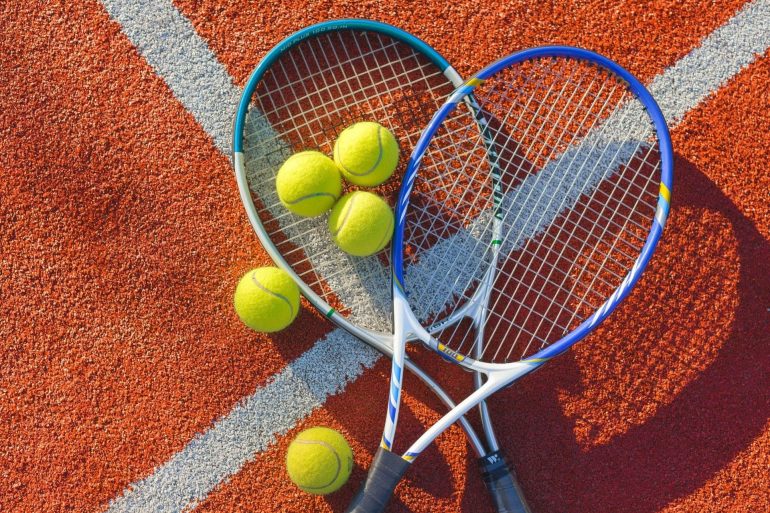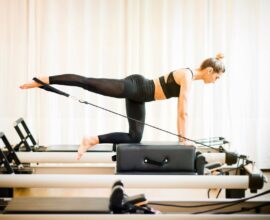All about tennis and its basic rules
The origins of tennis: a brief history of an ancient sport
The long history of tennis begins in the Middle Ages. At that time in France a game called ‘jeu de paume’ was popular. The name, lit. ‘game of palm (of the hand)’, refers to the fact that the players, according to the rules, could hit the ball only with the palm of the hand protected by a glove. In fact, the use of a racket started later, in 1520.
The French nobility particularly loved this game that is also the ancestor of modern tennis. It reached its peak of popularity in the 16th century. At the time, Francis I of France, a great enthusiast, ordered the construction of numerous courts. He also introduced the game to the common people. And his successor, his son Henry II, carried on the tradition.
A 1552 painting depicting King Charles IX with a racket is another important testimony to the passion for tennis in 16th-century France. Charles IX was the sovereign who in 1571 founded the first guild of professional tennis players. He also organized the first tournament with rackets, divided into 3 categories: apprentices, amateurs and professionals.
Another important event in the history of tennis il linked to Antonio Scaino da Salò, an Italian abbot at the court of Alfonso II Duke of Este. In 1555 he codified the rules of the game and collected them in a treaty. In his work, Scaino described the different types of tennis balls, the different terrains and the variety of techniques and strategies.
Also in England it was mainly the nobility who practiced this sport, called Real Tennis. King Henry VIII made it famous across the country by playing in a tennis court built in 1530 at Hampton Court Palace, a palace located in the London borough of Richmond upon Thames.
Then, the legend says that Anna Bolena’s arrest occurred while she was attending a Real Tennis match and that Henry VIII was playing a match when he knew about the queen’s execution. Real Tennis, in particular the balls used during the game, also appear in William Shakespeare’s ‘Henry V’, when the king receives a basket full of them as a symbol of his youth and light-heartedness.
The birth of modern tennis dates back to 1874 and the credit goes to the English major Walter Clopton Wingfield. The British Army officer patented the invention of a new game in the London Chamber of Crafts. He started marketing it the same year, selling boxes containing rubber balls imported from Germany, 4 rackets, a net, field markers and an instruction manual. In Wingfield’s version, the field had to be in the shape of an hourglass, with a suspended and transportable net in the center.
The Wimbledon Tournament, or simply Wimbledon, started 3 years later and it is now the oldest tennis event as well as Britain’s main international tournament.
Finally, one last anecdote about the origins of the word ‘tennis’. In the 15th century, the first English players had to shout the French word ‘tenez’ before throwing the ball, but they ended up mispronouncing it.
Tennis rules: everything you need to know to start playing
Tennis is a sport that involves 2 or 4 players, 2 against 2 or a double match. The tennis court is divided into 2 halves by a net 0.914 meters high in the center and 1.07 meters high on the ends. The tennis court can be clay, grass, concrete or synthetic material, outdoors or indoors.
The aim of the game is to send the ball to the opposite half, within areas defined on the type of match, and to ensure that the opponent cannot strike back.
These are the main rules of tennis:
- The matches are divided into sets. A match is usually played as best of 3 or best of 5 sets.
- The set consists of 6 games. The player wins when they reach 6 games with least a 2 point lead (6-0, 6-1, 6-2, 6-3, 6-4). On the score of 5 even games they have to win 7-5.
- The points increment from 15-30-40-game. The player wins the game after scoring 4 points. In case of 40-40 the deuce takes place and the player who first gain 2 points of advantage wins.
- A tie-break occurs when agame reaches the score of 6-6. The player who reaches 7 points with a 2 point advantage wins. In the tie-break the points follow the normal numerical sequence (1, 2, 3, 4, etc.).
- At the end of a set without tie-break, the sum of the scores of all the games is divided by 2 to determine the server in the next set and their half-court:
– If the remainder is 0, the server is the same as in the first game of the set. Otherwise, it is the opponent;
– If the result is a tie, the half-court is the same as the first game of the set. Otherwise, it is the other one. - At the end of a tie-break set, the server of the first game of the next set is not the same of the previous one. In addition, the points scored in the tie-break by the player who lost are taken into account to establish the half- If the result is:
– lower than 6, the serving half-court will not be the same as in the first game of the previous set;
– higher than 6, the number will be divided by 3. If the result is even, the serving half-court will be the same as the first game of the previous set. Otherwise it will be the other one. - The server must bounce the ball within the rectangles by the net in the opponent’s half-court. The player has 2 chances, then the point goes to the opponent. If the ball bounces within the correct rectangle but touches the net tape, the serve must be repeated. The repetition is called let or let’s. There is no limit to the number of consecutive lets nor any penalty.
- The basic strokes in tennis are four: the serve, the forehand, the backhand, the volley.
- The player who serves must be over the end line of the court. If they touch the line with their foot, they commit a foul and loose 1 point.
- The player has 2 consecutive serves. If both fail, they commit a “double foul” and the point goes to the opponent.
- The first serve of each game starts from the right side of the server’s half-court, the next one on the left and so on alternately.
- A player who scores with a serve, without the opponent being able to respond, scores an ace.
Playing tennis in Sardinia. The Tennis Academy by Head at Forte Village
Forte Village is the award-winning resort surrounded by the splendid Sardinian sea. At the Tennis Academy by Head, guests have access to 12 clay courts and 1 hard court.
The Forte Village Tennis Club is home to the international tournaments of the ITF circuit and offers tennis courses for players of all ages and levels. Kids can join a group academy, from Monday to Friday, while adults can book private lessons with the instructors. They can also train with the great professionals.
In addition, kids who participate in the weekly course receive as a gift the training kit by Head, the official sponsor of the Academy Tennis.
But there is more. At the Forte Village sports academies guest can play also football, freestyle, rugby, basketball, boxing, fencing, swimming and much more.
Do you want to learn how to play tennis and live a dream vacation in a real paradise? Discover the Forte Village Resort in Sardinia.






